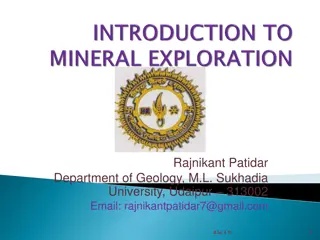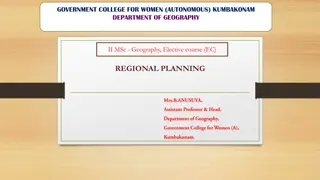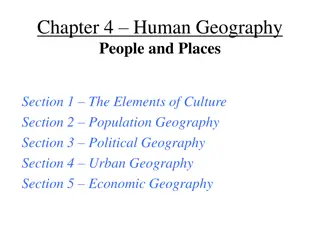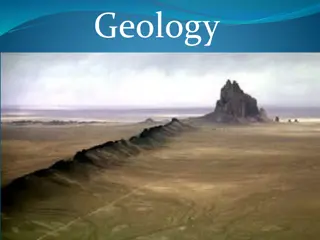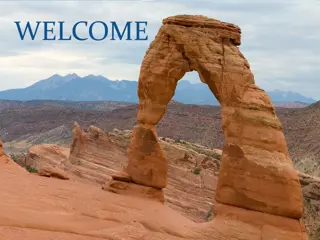Insights into the Siwaliks: Geography, Geology, and Climate
Siwaliks, part of the Himalayan range, hold a rich geological history with unique landscapes and diverse flora and fauna. Stretching from Bhutan to Pakistan, these mountains boast a variety of rock layers, surrounding rivers, and distinct climates. The region's straitigraphy and geology mark it as a significant area for studying Earth's history and evolution.
Download Presentation

Please find below an Image/Link to download the presentation.
The content on the website is provided AS IS for your information and personal use only. It may not be sold, licensed, or shared on other websites without obtaining consent from the author.If you encounter any issues during the download, it is possible that the publisher has removed the file from their server.
You are allowed to download the files provided on this website for personal or commercial use, subject to the condition that they are used lawfully. All files are the property of their respective owners.
The content on the website is provided AS IS for your information and personal use only. It may not be sold, licensed, or shared on other websites without obtaining consent from the author.
E N D
Presentation Transcript
Introduction to Siwaliks: The name introduced by MEDLICOTT (1864) for the sub Himalayan rocks of the Dehradun in India. thick terrestrial deposits in the northern part along the foothills of chiefly consists of mudstones, sandstones and coarsely bedded conglomerates
Siwaliks geography: Location of sivaliks: the narrow strip of Bhutan, Nepal, India and Pakistan Width of 6-90km. youngest east-west and southernmost mountain chain of the Himalayas extending about 1689 km (1050 miles) from southwest Kashmir through India into southern Nepal. Shiwalik, Shivalik, Sivalik, Churia, or Outer Himalaya mountains having many sub-ranges crest size of 900 to 1200 meters.
Sorrounding rivers: extends from the Teesta River (Sikkim), westward of Nepal, through Uttarakhand, also continuing into Kashmir and Northern Pakistan. These ranges also pass from large rivers flowing in south of Himalayas i.e. Ravi, Satluj, Beas, Jehlum, Yamuna, Ganga, Indus, Chenab etc.
Auden, J. B. 1935. Traverses in the Himalaya. Rec. Geol. Surv. India 69(2):123- 167.
Climate of siwaliks The flora and fauna of the Himalayas and nearby siwalik hills varies with climate, rainfall, altitude, and soils. The climate ranges from tropical at the base of the mountains to permanent ice and snow at the highest elevations. The amount of yearly rainfall increases from west to east. This diversity of climate, altitude, rainfall and soil conditions generates a variety of distinct plant and animal communities, or eco regions.
Straitigraphy: branch of geology studies rock layers (strata) and layering (stratification).
Basic types: Lithostraitigrapy bioostraitigrapy choronostraitigrapy megnatostraitigrapy
Geology of siwaliks: belong to the tertiary deposits chiefly composed of sandstones and conglomerate rock the remnant magnetization of siltstones and sandstones suggests a depositional age of 16- 5.2 million years with Karnali River exposing the oldest part of the Siwalik Hills in Nepal. southernmost and geologically youngest east- west mountain chain
Lower siwaliks: Kamlial and Chinji formations height of approximately 4,000 feet life span about 18 to 11.2 million years Fauna: Pigs, elephant, carnivores artiyodectiles, Colossochelys atlas,
Gomphotherium: http://www.worldcat.org/title/vertebrate-fauna-from-the-siwalik-beds-of- haritalyangar-himachal-pradesh-india/oclc/855417423
Colossochelys atlas: (giant tortoise): http://www.worldcat.org/title/vertebrate-fauna-from-the-siwalik-beds-of- haritalyangar-himachal-pradesh-india/oclc/855417423
Artiodactyles Sivapithecus http://www.worldcat.org/title/vertebrate-fauna-from-the-siwalik-beds-of- haritalyangar-himachal-pradesh-india/oclc/855417423
Middle Siwaliks Nagri and Dhok Pathan with thickness of 30m to more than 60m. The Nagri Formation is conformable with the underlying Chinji Formation and overlying Dhok Pathan Formation. The life span is about 8 million years.
Fauna: Its fauna mainly consists of four footed animals of pothohar basin. Hipparion antilopinum (three-toed horse)
Upper Siwaliks three lithostratigraphic units (Tatrot, Pinjor, and Boulder Conglomerate formations). 6,000 feet in height with life span of 3.5 million years to recent. Fauna: Grazing and browsing animals are main representatives of this region such as elephants, giraffes, hyenas, tigers, monkeys, rhinos, horses, camels, ungulates, boars etc. its fauna became similar to Eurasias.
Seminopithecus ape Macacus monkey
Artiodactyles Bisons:
Stegodon ganesa Sivatherium http://www.worldcat.org/title/vertebrate-fauna-from-the-siwalik-beds-of- haritalyangar-himachal-pradesh-india/oclc/855417423
Key faunal events in siwalik hills in the history: Prior to 18 m.y.a the siwaliks fauna begin to establish 18-14 m.y.a bovids and other large hebivores, ruminants, muroids, cricetidae (deer) became dominant. 14-9.5 m.y.a. appearance of hominids, muroids, and horses became dominant. 7.5-6.5 m.y.a. siwalik fauna became similar to Eurasia, sivapithecus become extinct, porcupine, giraffes,old world monkeys etc. 7.4 m.y.a onwards large hominoids Gigantopithecus disappeared, environment changed and became arid.
Siwalik Fossil Park ,also known as the Suketi Fossil Park, in the Sirmaur district in the Indian state of Himachal Pradesh models made of fibreglass and resins, There is also a museum, where the fossils are curated and exhibited. It is Asia's biggest fossil park.
Features of Siwalik Fossil Park: The fibreglass models on display in an open area in the fossil park are of six extinct animals. These are: Huge land tortoise, gharial, four horned giraffe, sabre-toothed cat, large tusked elephant, and hippopotamus.
Museumof Siwalik National Park: skeletal remains of different groups of skulls and limbs of mammals, skulls of hippopotamuses, tortoises, gharials and crocodiles, tusks of 22 species of elephants, rocks and charts and paintings two genera of extinct primates, Sivapithecus and Ramapithecus.
Imporetance of siwaliks: Ancestral fauna: sloth bear, Sivatherium, an ancient giraffe, Colossochelys atlas, a giant tortoise named the Siwaliks giant tortoise, Megalochelys atlas amongst other creatures. http://specialtoursindia.com/asias-lone-fossil-park-saketi.htm
Comparison of present and fossilized animals of siwalik fossil park Sabre-toothed cat (very long canines)
The model of the giant land tortoise http://specialtoursindia.com/asias-lone-fossil-park-saketi.htm
Models of the giant-sized elephants http://www.worldcat.org/title/vertebrate-fauna-from-the-siwalik-beds-of- haritalyangar-himachal-pradesh-india/oclc/855417423
The model of a four-horned giraffe With short neck Became extinct 1M.Y.A








